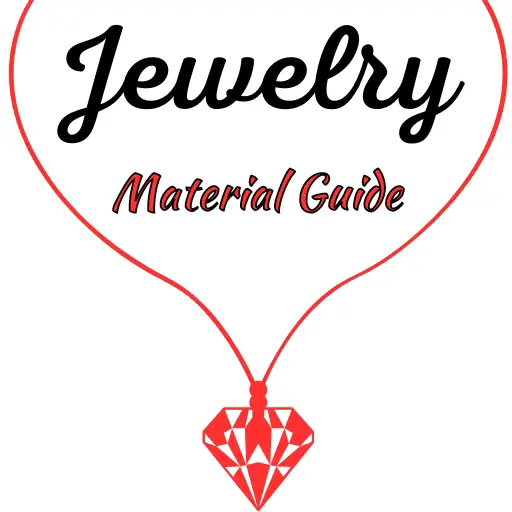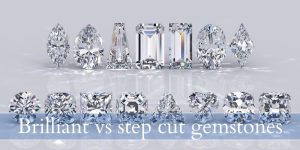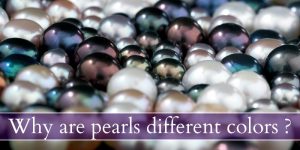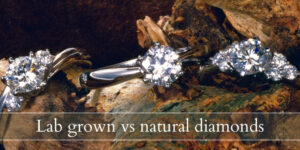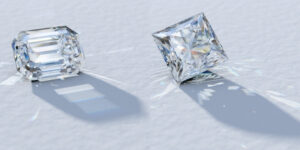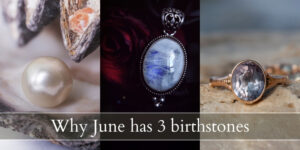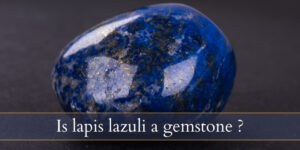Gemstones come in many different shapes and colors, yellow being one of the brightest and most fun colors possible. It’s a sunny color that is associated with abundance, the sun, gold, good vibrations, and general wellbeing. So if you’re looking to wear a gemstone that gives you those feelings, here’s a list of the ones that you’re most likely to find at a jeweler’s.
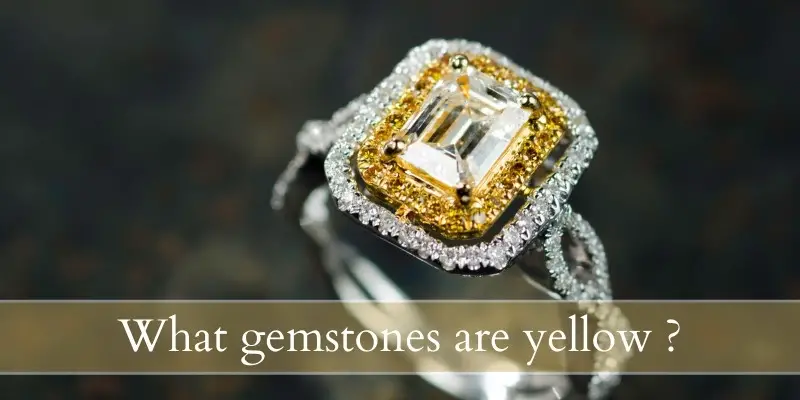
1. Yellow diamonds (canary)
Yellow diamonds are actually the baseline for all diamonds. We’re all accustomed to white diamonds, but in truth a diamond falls within a color range from nearly white to very definitely yellow. Very few diamonds are (seemingly) white, and those are the D rated ones. Even those have a slight yellow tint, but you will only notice it by looking with a jeweler’s loupe.
So what are yellow diamonds ? They are simply diamonds with a noticeable yellow hue. The very bright ones are called canary diamonds, after the famous yellow bird. Many yellow diamonds, especially the canary ones, are treated for better color.
Color – yellow diamonds range from pale yellow to deep, vivid yellow. They are called fancy yellow, to differentiate them from regular diamonds.
Price – yellow diamonds are the most common color for fancy diamonds, but you still have to pay a pretty penny. Yellow diamonds sell for an average of $74,000 per carat for an intense yellow one. More vivid ones can go for as much as $140,000 per carat while paler ones will sell for as little as $23,000 per carat.
Hardness – yellow diamonds are still diamonds, so they will be 100% good to wear every single day. Diamonds score a 10/10 on the Mohs hardness scale so this is definitely something you can hand down to future generations.
2. Yellow sapphire
Yellow sapphires are a very real thing, and they’re almost always a very bright, vivid yellow. They won’t sparkle as much as a yellow diamond but oh boy do they deliver a sunny blast of color !
Color – yellow sapphires are almost always a bright, vivid yellow in a neutral tone, but you may find ones with a green undertone.
Price – yellow sapphires sell for an average of $2,200 per carat for an intense yellow body color. Paler ones can sell for about $1,000 per carat while very vivid, intense yellow ones can go for as much as $3,000 per carat.
Hardness – yellow sapphires score a 9 on the Mohs scale of hardness, so they’re still amazingly resilient. They can easily be worn every single day, such as an engagement ring or pendant.
3. Citrine
Citrines are a very popular and well known yellow gem, and they’re quite abundant. Citrine is a form of quartz with a yellow tint to it. It’s in the same family as amethyst ! But citrine is usually very clear and this makes it seem quite pale in many cases.
Color – the usual color range for citrine is pale yellow to deep yellow (almost orange). Sometimes the body color is stronger and this results in a vivid color but most of the time these gems are very clear and thus a bit pale.
Price – citrines are very, very affordable gemstones, selling for an average of $7 per carat, which is about the same as an amethyst.
Hardness – citrines are a type of quartz, and as such they average a 7 on the Mohs hardness scale. This means they will pick up scratches as time goes by, so it might not be a good idea to wear your citrine on a ring or bracelet. Or if you do, only wear it occasionally.
4. Heliodor
Heliodor is a little less known than these other yellow gems, but you definitely know its sibling, emerald ! Yes, heliodor is in fact a type of beryl, just like emerald and morganite. It’s harder to find than the other three gems before it, but you can definitely ask your jeweler for help.
Color – heliodor ranges from a pale yellow to a vivid, intense yellow and may sometimes have a slight green hue.
Price – heliodor averages a $70 per carat for a good color gem, with more intense colors going as far as $100 per carat.
Hardness – heliodor averages an 8 on the Mohs hardness scale, meaning it can be worn daily but you should expect to have it re-polished every few years.
5. Yellow topaz
Yellow topaz is actually the most common topaz color of all ! But sometime in the mid-20th century blue topaz took over as the most popular color, so yellow topaz is abundant, but not in demand. You can easily find it at a retailer or jeweler, but you have to work through a slew of blue topaz to get to it.
Color – yellow topaz ranges from pale yellow to a deep golden yellow. The ones that show a warmer hue like orange or pink are bordering the imperial topaz category and as such they will be far more expensive.
Price – yellow topaz averages at $5 per carat, sometimes even less because there simply isn’t much demand for yellow topaz. Blue topaz is obtained mostly by irradiating yellow topaz, so there isn’t much reason to keep the yellow ones.
Hardness – topaz averaged an 8 on the Mohs hardness scale, which means it can be worn daily but should be polished every few years. This is a very clear gem and scratches will be very noticeable so be careful when wearing it.
6. Yellow garnet
Garnets are famous for being red or reddish-purple, but did you know there is also a version of yellow garnets ? They’re most commonly found under the label of Mali garnets, because they’re most prevalent in the country of Mali (West Africa).
Color – yellow garnets come in pale grey-yellow, yellow, yellow-orange, and yellow green, all depending on what kind of garnet subspecies you’re looking at.
Price – yellow garnets sell for an average of $50 per carat for a vivid color gem.
Hardness – garnet averages a 7 on the Mohs scale of hardness. This means it’s fit for daily wear but should still be kept out of harm’s way, such as in a pendant or a pair of earrings instead of a ring or bracelet.
7. Yellow tourmaline
Tourmaline comes in many, many different colors and yellow is just one of them. These gems are also very abundant so getting your hands on them shouldn’t be a problem. However if you’re looking for pre-made jewelry with yellow tourmaline, you’re out of luck. Most tourmaline jewelry is either pink, green, or black.
Color – yellow tourmaline ranges from a pale yellow to deep, golden yellow that can sometimes cross into almost orange (like amber or honey)
Price – yellow tourmaline sells for an average of $50 per carat, much like yellow garnets.
Hardness – tourmaline is a 7 on the Mohs scale of hardness so just like garnets you can wear them daily but expect to have them re-polished every few years.
8. Amber
Amber is not a gemstone per se, it’s more of an organic material. In truth amber is a form of fossilized tree resin from millions of years ago. It may have various small insects or flowers of leaves encased within, which ups the price dramatically. Fortunately amber is not uncommon and not that difficult to come by.
Color – amber is very much like a dollop of honey, it can go form pale yellow to deep, dark golden yellow and nearly orange-brown. It’s always a very beautiful color though, so you’re sure to find something you like.
Price – amber varies wildly in price, depending on the source, the age of the amber, and whether there is anything within the amber. So you can find amber for as little as $20 or as much as $5,000 per carat !
Hardness – this gemstone is actually very soft, so it should definitely be reserved for occasional wear, or only worn as earrings or a pendant. Amber scores an average of 2 on the Mohs hardness scale, which makes it incredibly easy to scratch, chip, or otherwise damage. Be very careful with it.
9. Golden South Sea pearls
South Sea pearls are famous for their incredible luster, and they come only in three colors: white, golden, and Tahitian (black-green). The golden ones are possibly the most sought-after, so they’re definitely going to be available whenever you’d like to look for them.
Color – golden South Sea pearls aren’t yellow, they’re more of a golden color. They have an incredible satin sheen to them, and it’s a pale, soft golden-yellow color. Some can get darker and be almost as vibrant as 18k yellow gold, but those are rare.
Price – these gems can range form $150 to $500 per pearl, depending on their size, color, and luster. Larger pearls (9-12mm) with a deep color and great luster fetch the highest prices.
Hardness – pearls are very sensitive gems, just like amber. They score a 2.5 on the Mohs scale so they will easily scratch and chip. It’s best to only wear pearls in earrings and necklaces.
Best yellow gemstones for jewelry
Fortunately yellow is a fairly common color for gemstones so you won’t have a hard time finding one that is in your budget and speaks to you. We recommend getting yellow gemstones that you can easily find at a jeweler or retailer, and ones that also have a reasonably high Mohs rating (7 and up). Examples in this list include yellow diamonds, yellow sapphire, heliodor, citrine. It’s difficult to find yellow topaz, yellow garnet, and yellow tourmaline as loose gems.
If you’d like to wear your gems every single day, or in a jewelry piece that is going to get scratched with daily activities such as rings and bracelets, we recommend getting a gem of at least 9 rating. Otherwise you’ll just be re-polishing the gem every few years and eventually replacing it. Re-polishing takes a whole layer off. Examples on this list include yellow diamonds and yellow sapphires.
Of course, budget is always important so that will have to be take into account when deciding which gems to use. Do not be afraid of lab-grown gems if your situation leads you to getting one as a compromise. Because the best gems to be worn daily are very tough, and very expensive, so you might have to take a step back and reconsider.
What metal do yellow gemstones go with ?
Yellow gemstones look amazing in yellow metal such as yellow gold, and they look good in white metal such as white gold, platinum, or silver. Rose gold doesn’t look as great with a yellow center stone, though you can make it work with a few white accent stones or a halo.

I’m the main author for jewelrymaterialguide.com. I started this site after we did tons of research before our wedding and noticed that there is information about rings, jewelry, and so on that is really hard to find on the internet.
